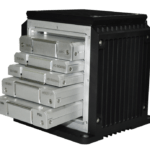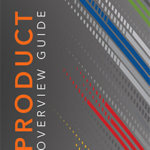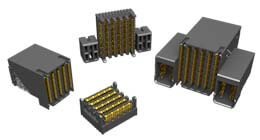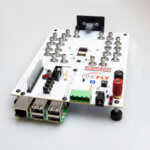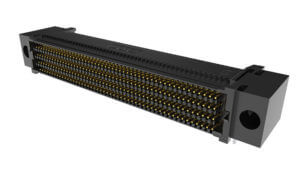
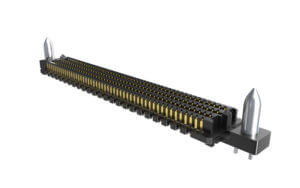
As a sponsoring VITA member, Samtec supports the release of the new ANSI/VITA 74.0-2017 Small Form Factor Base Standard. VITA 74, also referred to as VNX, defines both the mechanical and electrical standards necessary for a Small Form Factor (SFF) system.
Designed for deployment in rugged environments, VNX systems provide rapid serial fabric interconnects in a plug-in module format. These systems also feature improved size, weight, and power (SWaP) characteristics, crucial in an embedded system. VITA 74 Standard-based products serve markets needing ruggedized products requiring Data Plane interconnect technologies. Various vendors are already incorporating these VNX technologies offering features such as:
- Small Form Factor (SFF) switched serial interconnects
- Open-frame backplane design
- Legacy I/O compatibility at the Plug-In Module level
- PCIe Gen 3 compliance and beyond
- Available in variable chassis heights of 12.5 mm and 19 mm
Its unique module-based format offers system architects greater freedom in developing COTS SFF systems. VNX’s machined chassis, robust backplane, and conduction-cooled modules unite to form an extremely rugged assembly.
Defining mechanical and electrical requirements, VNX embodies a small-scale VPX architecture, simplified to satisfy a new range of applications. The Standard encourages vendors to supply system components, including modules, backplanes, enclosures, and completed solutions.
Samtec’s SEARAY™ right-angle connectors are featured in the VITA 74 base standard, which specifies 12.5 mm and 19 mm stack height plug-in modules. SEARAY right-angle is capable of speeds up to 25 Gbps, provides low insertion/extraction forces, and also features solder charge terminations. This connector was chosen based on its successful performance in the VITA 57.1 FMC Standard, as well as its high-speed capabilities and rugged design.
For more information on Samtec’s complete line of VITA 74 VNX or SEARAY™ right-angle solutions, please email our technical experts at [email protected] or visit the Samtec standards page.
Related links that may be of interest:
